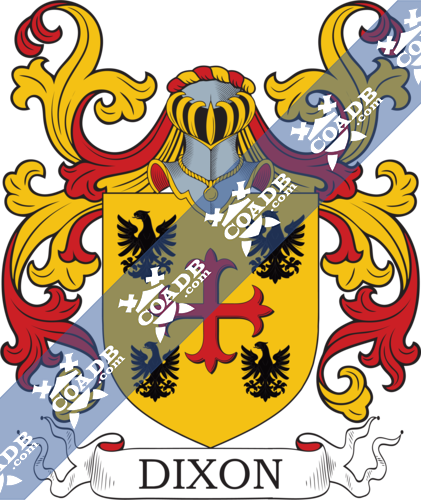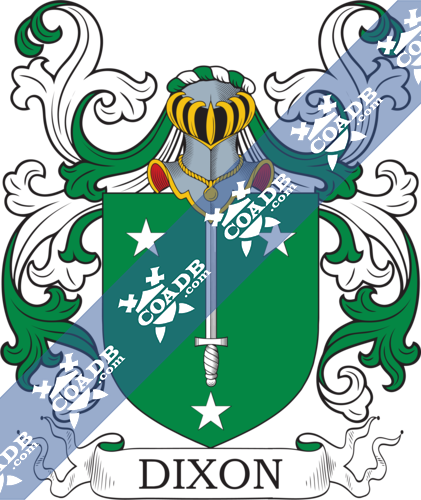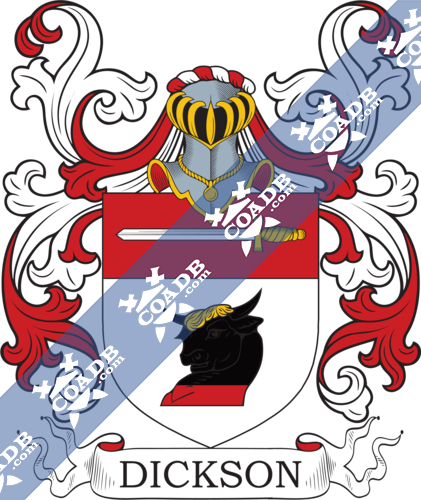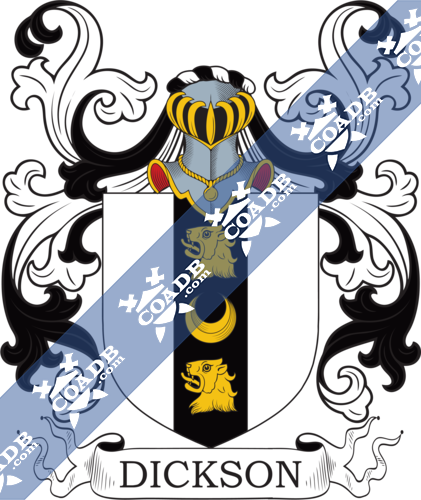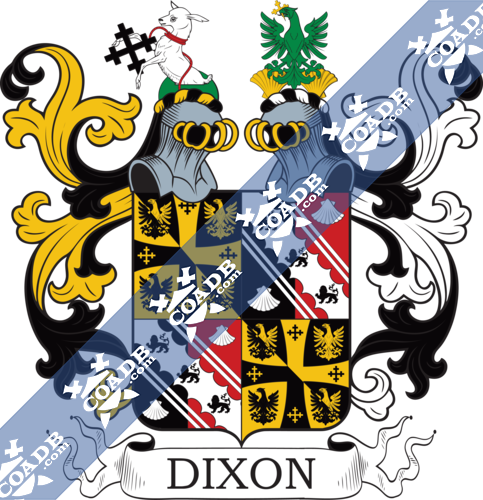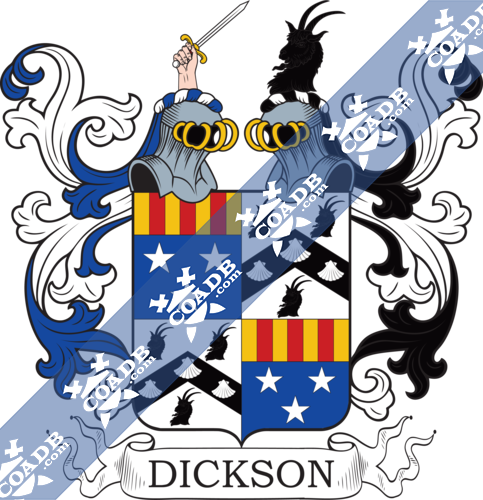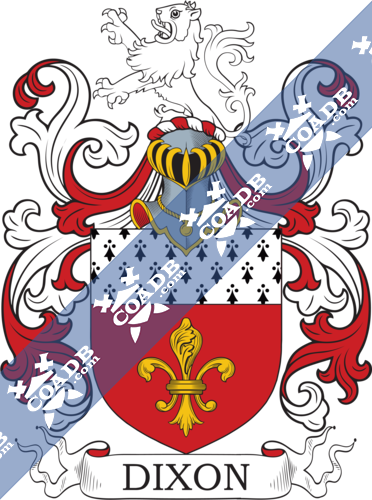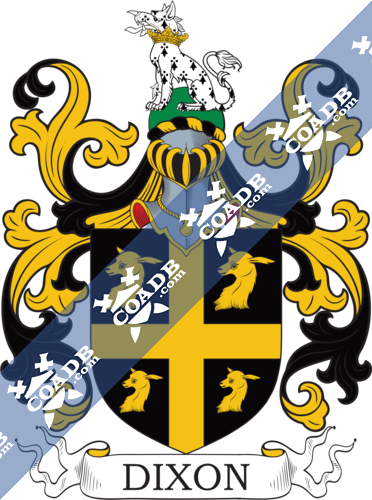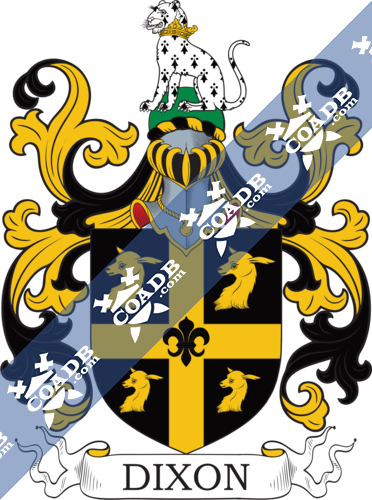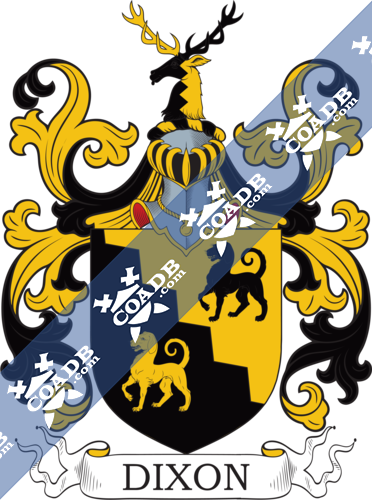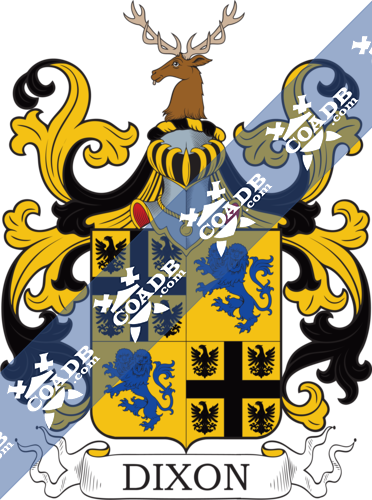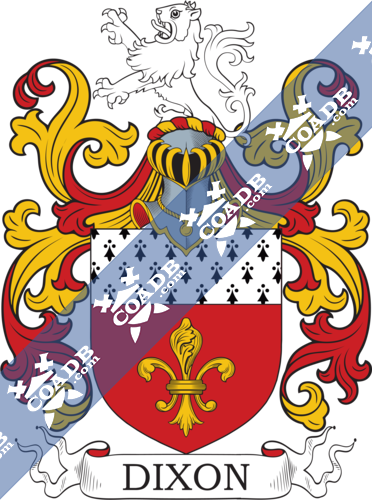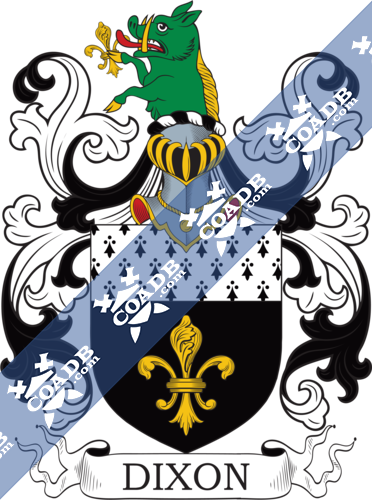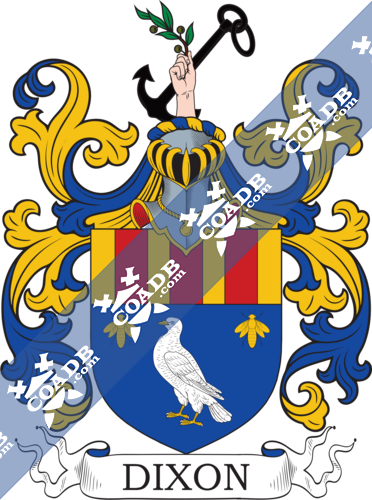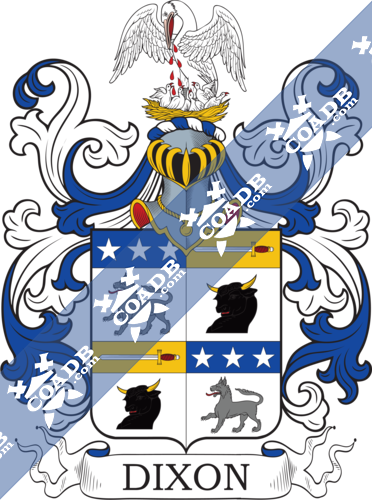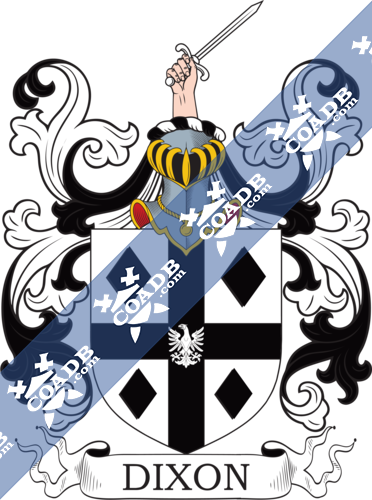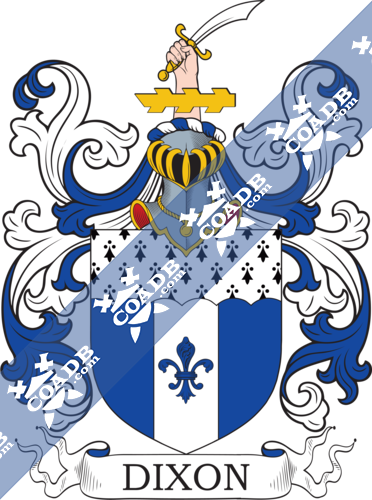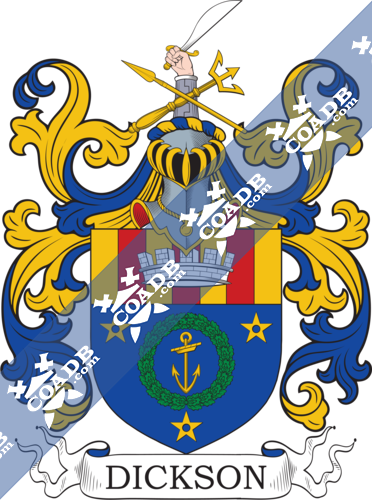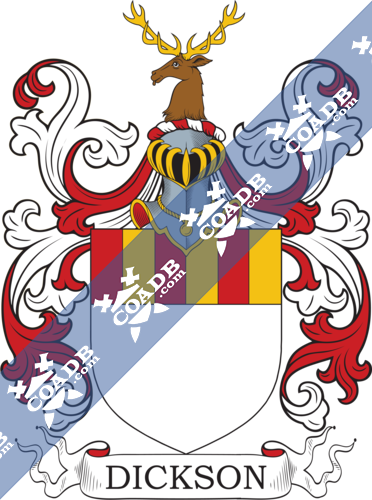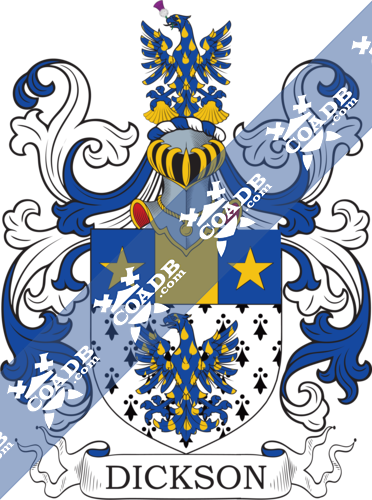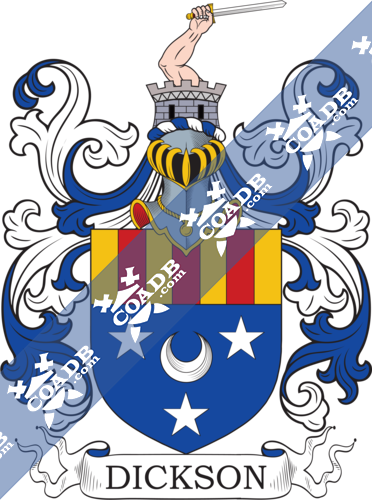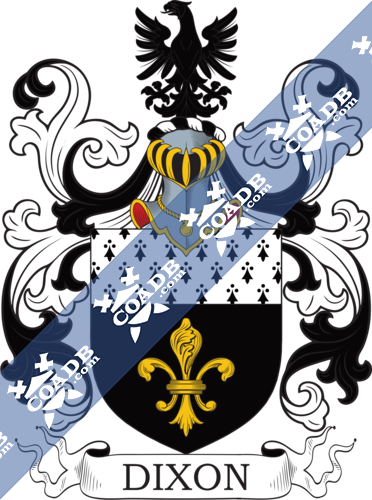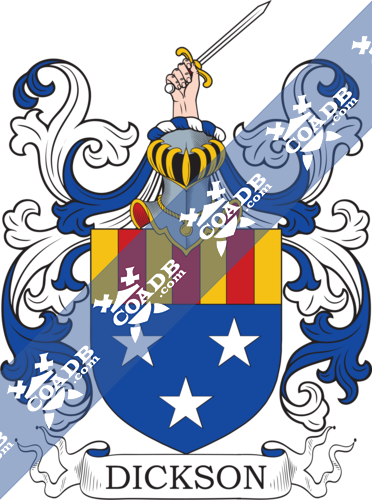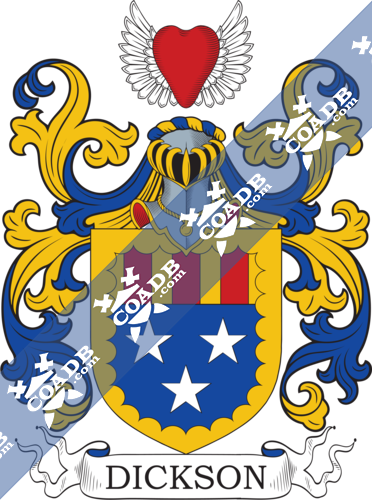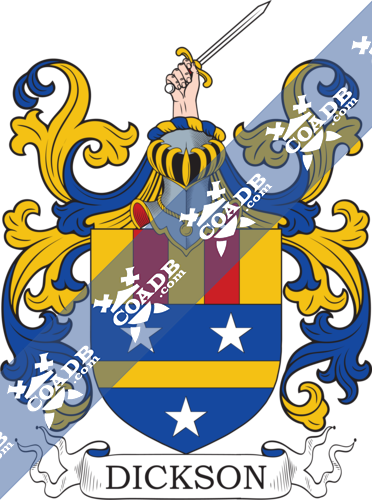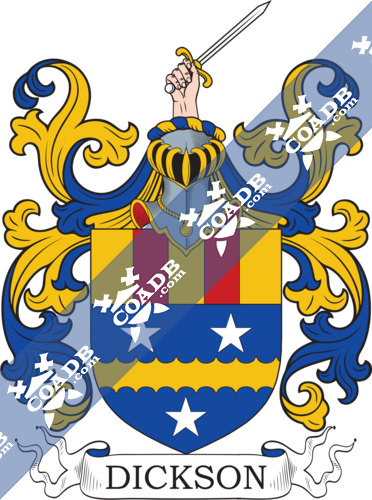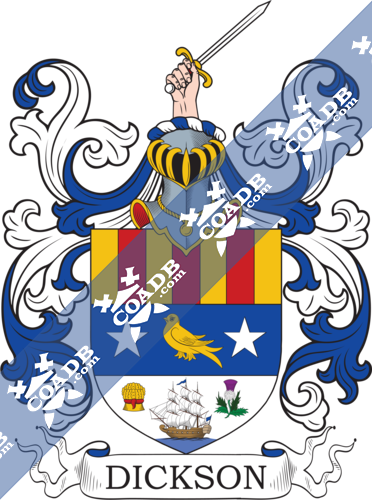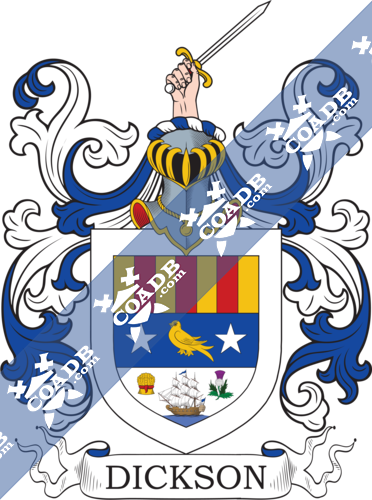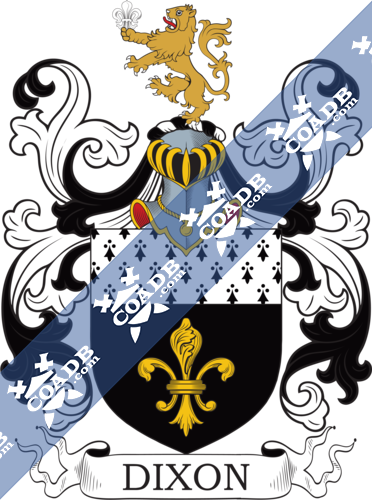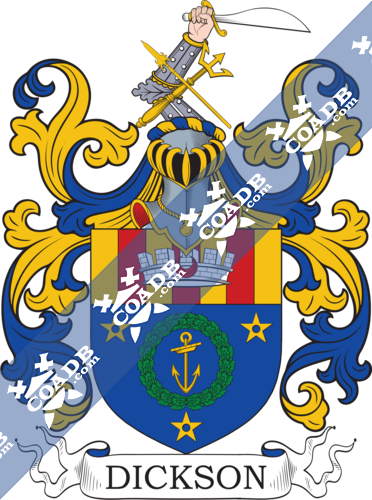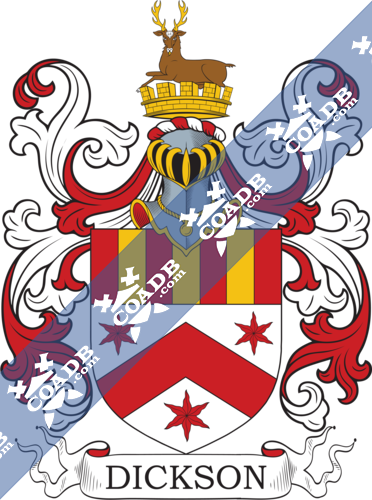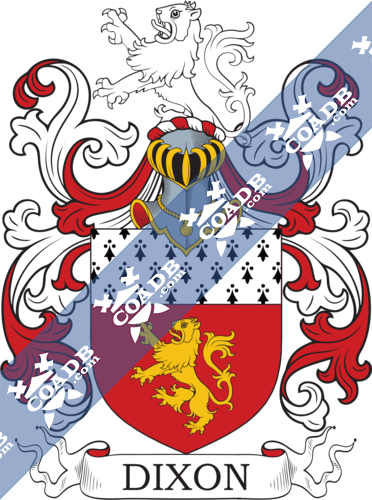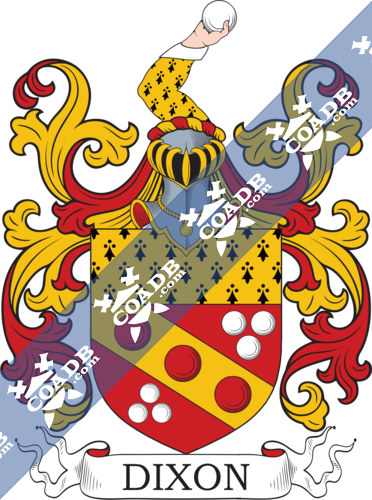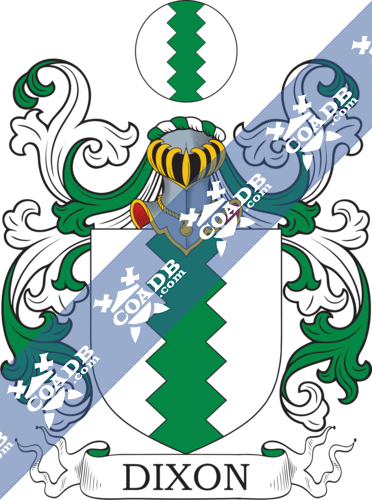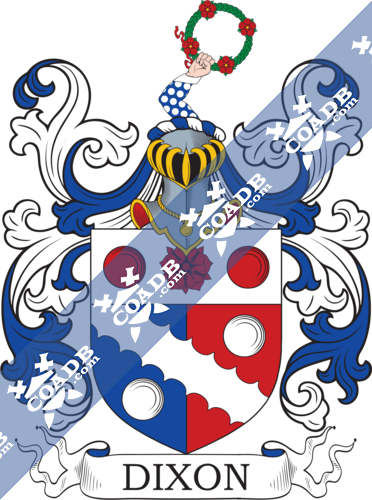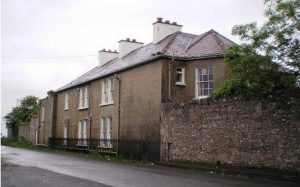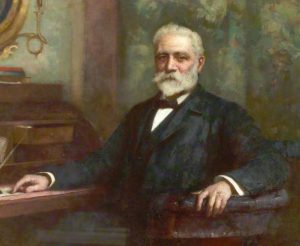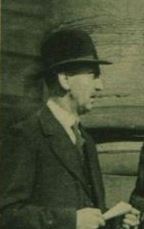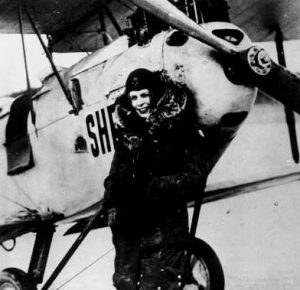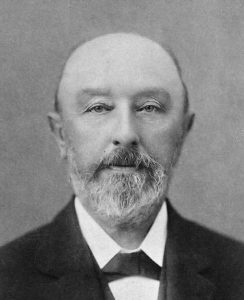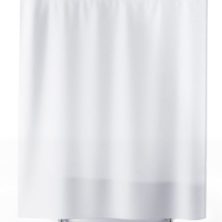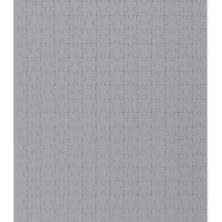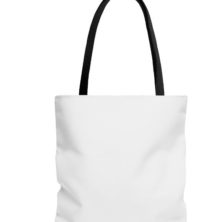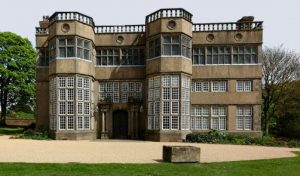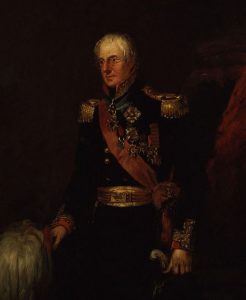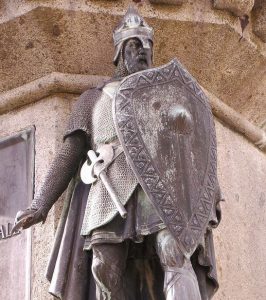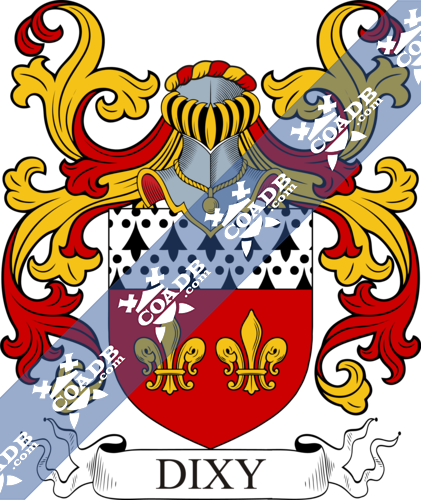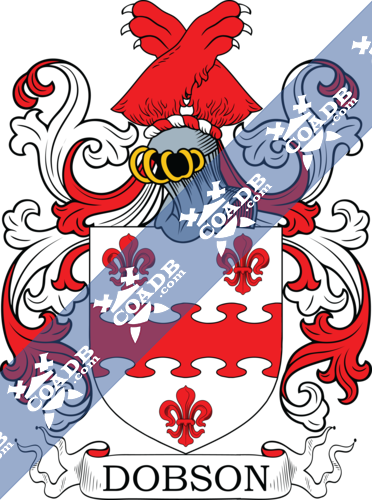Dixon Family Crest, Coat of Arms and Name History
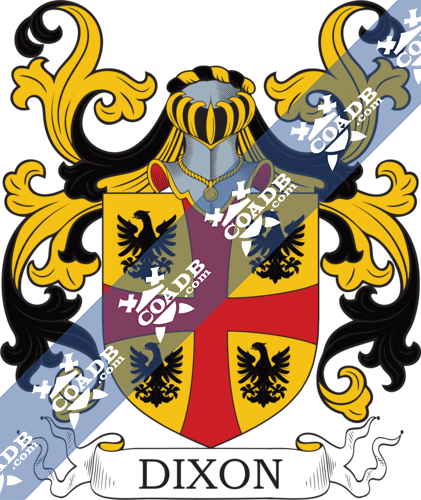
Dixon Coat of Arms Gallery
Don’t know which Coat of Arms is yours?
We can do a genealogical research. Find out the exact history of your family!
Learn MoreDixon/Dickson Surname Name Meaning, Origin, History, & Etymology
This is a baptismal/patronymic surname meaning “the son of Dick”, with Dick being a nickname or pet form of the old medieval personal (first) masculine given name Richard, a Germanic and Celtic name. The spelling Dixon is prominent in Northern England, whereas the Dickson is more likely found in Northern Ireland and Scotland. The first name Richard derives from the Germanic elements ric, meaning “power” or “rule” and hard, meaning “brave” or “hardy”, and hence the name literally translates to “brave power”. The name was introduced from mainland Europe to the British Isle by the Normans during and after the Norman Invasion of 1066 AD. The name was born by three Kinds of England (ex. King Richard I the Lionheart) and some Dukes of Normandy and Burgundy earlier. The ancient Germanic spelling was Ricohard. The name first became established in Kirkcubbrightshire, Scotland, where they family held land and titles.
The Dixons descend from Richard Keith, a son of the Keith family who were earls-marshal of Scotland. This Richard was called Dick and his sons were styled “Dickson”. He is thought to be the son of Hervey de Keth (1187-1249 AD) and Margaret Douglas. Keith is an ancient Pictish Clan. His ancestors were:
Hervey de Keith (born around 1090 AD, son of the Heiress of Marbhachair)
Herveus de Keith “The Young” (East Lothian around 1109 AD)
Malcom de Keith (East Lothian, Scotland, around 1135 AD)
Philip de Keith (East Lothian, Scotland, 1161 AD)
George Fraser Black’s 1946 book The Surnames of Scotland, states the following in regard to this last name: “The family increased rapidly, and became one of the principal Border Clans of the East Marches. These Foraying or Riding Clans, as they were otherwise styled, were broken up about the time of the union of the Crowns; and, although most of the Dicksons remained in the Border counties, some went farther north. One branch removed to the highlands of Perth; and of this line was — Henry Dickson, of Dunblane, co. Perth, whose son, Thomas Dickson or Dixon, born in Dunblane, 1739, m. Elizabeth, dau. of Alexander Mann, of Renny, co. Ross, an officer in the army, and his wife Katharine, daughter of John Fraser, of Lovat, son of Thomas, Lord Lovat, and settled in the city of Westminster, where he adopted the English mode of spelling his name. In 1788, he removed to the Netherlands, where he died in 1824, æt. 84, and was succeeded by his only son, Thomas Dixon”.
The Irish Dixons came from Scotland, during the reign of King Henry VII. In 1617 or earlier, they bore the coats of arms of the English Dixons. It was also spelled Dykesone in Ireland.
The Baron of Malpas, William Belward, had two sons: David and Richard. Richard in turn had a son also named Richard, surname Little, a diminutive of his size. Richard in turn had two sons, the younger of whom was John, who bore the name Richardson. Some theorize the Dixons of northern England who traces their pedigree to the county of Chester, may perhaps be the descendants of John Richardson, whose alias was John Dickson.
The Dickson coat of arms show the Keith “pallets gules” and the Douglas “mullets argent”, which is meant to demonstrate their descent from these two ancient Scottish noble families.
Spelling Variations
Some spelling variants or names with similar etymologies include Dickson, Dicson, Dykson, Dikson, Diksoun, Diksone, Dixson, Diksoune, Dekeson, Dekisoun, Dekysoub, Diksonne, Dikyson, Duckison, Dyxsoun, and others.
Popularity & Geographic Distribution
The last name Dixon ranks 156th in popularity in the United Status as of the 2000 Census. The name ranks particularly high in the following four states: Georgia, North Carolina, Maryland, and Mississippi. The surname Dixon frequency/commonness ranks as follows in the British Isles: England (102nd), Scotland (367th), Wales (145th), Ireland (530th) and Northern Ireland (385th). In England, it ranks highest in counties Westmorland and Northumberland. In Scotland, the surname ranks highest in Dumfriesshire and Roxburghshire. In Wales, it ranks highest in county Anglesey. In Ireland, it ranks highest in Wicklow. In Northern Ireland, it ranks highest in Tyrone. The name is also present throughout the remainder English speaking world: Canada (309th), New Zealand (153rd), Australia (145th), and South Africa (737th).
The last name Dickson ranks 915th in popularity in the United Status as of the 2000 Census. The name ranks particularly high in the following five states: South Carolina, Oklahoma, Arkansas, Oregon, and Utah. The surname Dickson frequency/commonness ranks as follows in the British Isles: England (518th), Scotland (83rd), Wales (480th), Ireland (2,058th) and Northern Ireland (161st). In England, it ranks highest in county Northumberland. In Scotland, the surname ranks highest in East Lothian. In Wales, it ranks highest in Cardiganshire. In Ireland, it ranks highest in count Monaghan. In Northern Ireland, it ranks highest in county Down. The name is also present throughout the remainder English speaking world: Canada (580th), New Zealand (247th), Australia (300th), and South Africa (819th).
The 1890 book Homes of Family Names by H.B. Guppy, states the following in regard to this surname: “Dixon, very frequent in the English counties on the Scottish border. It is fairly represented in the midland counties and in the south – east of England, but is rare in the south – west counties. Dickenson is also a north – country name. Dickson, the Scottish form of the name, characterises central and southern Scotland”.
Early Bearers of the Surname
Thom or Thomas Dicson was a companion of Douglas during the capture of Castle Douglas in 1307 AD. William Dicsoun witnessed a charter by John Skinner in 1360 AD. Andrew Dicsoun owned land in Edinburgh, Scotland in 1400 AD. The Poll Tax of Yorkshire in 1379 AD lists one bearer of this last name: Willelmus Dycson. An early marriage involving this surname was William Dixsonne to Judith Madewell in London in 1569 AD. An early baptism involving this name was John Dyxoone at St. Peter Cornhill in 1557 AD.
Dixon/Dickson Family Tree & Dixon/Dickson Genealogy
Dickson of Woodville
The Dickson genealogy of this line begins with John Dickson, Esquire of Ballyshannon, county Donegal, in 1740, married Francs, daughter of Daniel Eccles of Castletown, and had issue with her. His eldest son was Thomas Dickson, Esquire of Woodville in county Leitrim, in 1775, married Hester, daughter of Reverend James Lowry, with his wife Hester, daughter of John Richardson of Richhill, and had issue with her: John, James Lowry (married Mary Eccles), Thomas, Robert Lowry (married Alica Lucas), William (married Hester Eccles), Hester (married Cairncross Cullen of Skreeny and later Reverend Herbert Nash), Francis (married a member of the Nash family), and Jemima (married John Eccles of Ecclesville). His oldest son was John, an Esquire of Woodville, who in 1803, married Mary Louisa, daughter of J. Bodkin of Thomastown, and had five sons and three daughters with her as follows: John Reynolds, Hyacinth, Robert (married the widow of Captain Green), Alexander (married Harriette Louisa Carey), Reverend Joseph William (married Louisa Frazer), Hester (married Captain Henry Cullen), Belinda Mary (married R. Herdman), and Mary Belinda (married William Newcombe). They were seated at Woodville, Bundoran and Tullaghan House in county Leitrim. His eldest son was John Reynolds Dickson, who was an Esquire of Woodville and Dungarberry, county Leitrim, and Justice of the Peace born in 1807. In 1837, he married Clara, daughter of Captain Skene of Lethenty, and had seven issue with her: John William (served in 71st regiment), Thomas Hyacinth (Commander in the Royal Navy), Ida Frances (married James Croke), Mary Elizabeth, Clara Hester (married Captain Francis L. Gore), Edith Grace (married R. Edgeworth Johnstone of Magheremena), and Audley Harriette (married W.H. White of Cloone Grange).
Dixon of Astle
The pedigree of this branch of the Dixon family tree traces back to William Dixon of Heaton who lived in 1564. His great –great grandson was John Dixon was an Esquire born in 1696. John married Frances, daughter of Thomas Gower of Hutton. He died in 1749 and was succeeded by his only son, Jeremiah Dixon, who was an Esquire, Justice of the Peace, Deputy Lieutenant, and Fellow of the Royal Society, born in 1726. He married Mary, daughter of Reverend H. Wickham, Rector of Guisley, and had eight sons and three daughters with her. He died in 1782 and was succeeded by his son John. John was an Esquire of Gledhow and of Weeting Hall, Suffolk, England and was a Justice of the Peace and Deputy Lieutenant, as well as a Colonel 1st West York Militia. He was born in 1752 and he in 1784, he married Lydia, daughter of Reverend John Parker of Astle Hall, and fathered the following children with her: Henry, John, George (General in the army, Colonel commanding 2nd Battalion Scots Fusilier Guards, married Mary Frances Wilmot), Lydia, Mary (married George Stone), Jane (Major Charles Loftus, son of General and Lady Elizabeth Loftus), and Anne (married Thomas Kinnersley of Clough Hall). He died in 1824 and was succeeded by his son Henry. Henry was born in 1794 and was a Lieutenatn of the 15th Hussars, but he died without issue. He was then succeeded by his brother, John Dixon. John was an Esquire of Astle Hall in county Chester and Gledow of county York, both in England, as well as a Captain and Lieutenant Colonel of the 1st Royals. He was born in 1799 and was a Justice of the Peace and Deputy Lieutenant. In 1840, he married Sophia, daughter of T.W. Tatton, and fathered eleven children with her: George (his heir), John Wykeham, Charles Egerton (Lieutenant of the 18th Regiment Royal Irish), Henry Grey (Lieutenant 25th regidemtn King’s Own Borderers), Frederick Parker, William Arthur Tatton, Edward Wilbraham, Anna Louisa (married Reverend W.H. Arundell), Sophia Lydia (married Richard Grahame and later W. Lisle Blenkinsopp Coulson), Jessie Maria, and Eleanor Georgina. His son George Dixon was an Esquire of Astle Hall county Chester, and a Justice of the Peace who was born in 1842 and was educated at Eton College. He was the Lord of the Manor of Astle and succeeded his father in 1873. The Dixon Coat of Arms (mistakenly called the Dixon Family Crest) has the following heraldic blazon: Gules, a fleur-de-lis or, a chief ermine. Crest: A demi-lion rampant argent.
Dixon of Astle
Sir John Dixon, 2nd Baronet, of Astle, Chelford, county Chester, England was born in 1886 and succeeded his father in 1924. In 1910, he married Gwendolen Anne, daughter of Sir Joseph Layton Elmes Spearman, 2nd Baronet, and had issue with her: John George (Captain of the 4th Hussars, married Caroline Hilterman), Nigel (Lieutenant in the Royal Navy) and Beryl. The lineage of this family goes back to John Dixon, who was born in 1696, and was fourth in descent from William Dixon of Heaton Royds, Yorkshire. He married Frances, daughter of Thomas Gower of Hutton, and died in 1749. He was succeeded by his only son Jeremiah. The Dixon Coat of Arms (sometimes mistakenly called the Dixon Family Shield) is blazoned in heraldry as follows: Gules, a fleur-de-lis or, on a chief argent, three ermine spots sable. Crest: A demi-lion gules, holding between the paws a fylfot or. Motto: Mores component hominem.
Dixon of Ballymenoch
The Right Honorable Sir Thomas James Dixon, 2nd Baronet, of Ballymenoch was born in 1868 and became a High Sheriff and Deputy Lieutenant in Antrim, Northern Ireland. He was a member of the Senate in Northern Ireland as well. He succeeded his father in 1907. He was also a Lieutenant and Custos Rotulorum in Belfast. In 1906, he married Edith Stewart, youngest daughter of Stewart Clark. The Dixon genealogy dates back to Thomas Dixon of Bun-na-Mairge, Ballycastle, county Antrim, who was born in 1770. In 1804, he married Mary McNeill. Their son Thomas Dixon, of Larne, a merchant and shipowner was born in 1805. In 1834, Thomas married Sarah, daughter of Archibald McCambridge of Mullarts, and had issue with her. He died in 1868, and was succeeded by his eldest surviving son, Sir Daniel Dixon, the 1st Baronet, of Ballymenoch, Holywood, county Down, Ravensdale, county Louth, and Glenville, Cushendall, county Antrim. He was born in 1844 and became a Justice of the Peace, High Sheriff, Deputy Lieytenant, Mayor of Belfast, and Member of Parliament. He married Eliza, daughter of James Agnew, and had a son with her named Thomas (2nd Baronet). He also had other issue: Daniel (Major of the 12th Bn. Royal Irish Rigles), Frank (Captain and Major of the 5th Bn. Royal Irish Rifles), Herbert (became Baron Glentoranand was raised to the Peerage in 1939), Percy (2nd Lieutenant 7th Royal Fusiliers), Kate (married Captain Charles Owen Slacke), Edith Sarah (married Lieutenant-Colonel Frank Augustus Douglas Stevens), Louisa (married Colonel Harold Charles Webster Wortham), Evelyn Annie (married Captain Herbert Bernard Ward, and Beatrice. The Dixon Arms are blazoned in heraldry as follows: Or on a chevron vair three billets of the field on a chief crenelle gules a tower proper between two fleur-de-lis of the first. Crest: A demi-lion rampant azure, charged on the shoulder with a cross patonce surrounded by a civic crown or. Motto: Fide et Constantia. This branch of the Dixon family tree resided at Wilmont House, Dunmurry, county Antrim and Unicarval, Comber, county Devon.
Other Dixon Pedigree & Family Trees
James Dixon was born in Ireland in 1613. He married Susanna and had two sons with her: Henry Dixon and William Dixson. Here is a pedigree beginning with the former.
Henry Dixon (Sego Parish, Armagh, Ireland, 1633, came to colonial America)
William Dixon (Armagh, Ireland, 1662)
Thomas B. Dixon (New Castle, Delaware, 1705)
Simon Dixon (New Castle, Delaware, 1728)
Benjamin Dixon (North Carolina, 1766)
Simon M. Dixon (North Carolina, 1813)
Simon M. married Hannah Stout and had the following issue with her: Benjamin, Thomas, James, Zelinda, Sarah, and Asenath
Early American and New World Settlers
Steven Dixon was recorded as living in Virginia (at Bucke Row) in February 1623.
Petter Dickson was recorded as living in Virginia in February 1623.
Stephen Dickson, age 25, came to Elizabeth Cittie, Virginia aboard the Bona Nova in 1619.
Ann Dixon was recorded among the dead in Virginia in February 1623.
Alice Dixon, age 21, came to the Barbados aboard the Ann & Elizabeth in 1635.
William Dixon, age 18, came to Virginia aboard the Thomas & John in June 1635.
Mathew Dixon, age 18, came to Virginia aboard the Assurance in July 1635.
Christopher Dixon, age 24, came to Virginia aboard the Assurance in July 1635.
Richard Dixon, age 20, came to Virginia aboard the George in August 1635.
The book Genealogical Guide to the Early Settlers, mentions two bearers of this last name:
1) William Dickson of Cambridge, freeman in 1642, married Jane, and had issue named Lydia, Mary, Abigail, Hannah, and John. The name is also spelled Dixon.
2) Jeremiah Dixon of New Haven, CT, 1639, was one of the founding members of the church there
3) William Dixon, likely of Charlestown, 1633-8, became a freeman in 1652, and died in 1666. He had a wife named Joan and issue named James and Susanna Frost.
Other settlers in colonial America bearing this surname include: Henry Dixon (Virginia 1606), Adam Dixon (Virginia 1612), Hugh Dixon (1701), Margaret Dixon (Virginia 1714), Richard Dickson (Virginia 1647), William Dickson (Maryland 1719), Edward Dickson (Maryland 1724), Samuel Dickson (Boston 1766), Jane Dickson (Charlestown 1767), and Andrew Dickson (New York 1775).
In Canada, some of the earliest bearers of this last name were William Dixon who came to Nova Scotia in 1749, as well as Cochran Dickson and John Dickson, who came to the same province in the same year. In Australia, George Dixon, a convict from Middlesex, England came to New South Wales (then a penal colony) in 1828 aboard the Albion, and James Dickson, a cartwright, came to Tasmania (then called Van Diemen’s Land) around 1830. In New Zealand, some of the earliest settlers with this surname were Charles, Edward, Joseph, and Michael Dixon who all came to the city of Wellington in 1840, as well as Alexander Dickson, a plumber by trade, age 30, who came to Otago in 1848 aboard the Philip Laing.
Early Americans Bearing the Dixon Family Crest
Charles Bolton’s American Armory (1927) contains one entry for this surname:
1) Azure three mullets argent, on a chief sable three palets gules. Crest: a hand holding a lance. Motto: Fortes fortuna juvat. Bookplate Frederick S. Dickson, Philadelphia.
Crozier’s General Armory (1904) and Matthew’s American Armoury and Bluebook (1907) do not contain an entry for this last name.
Mottoes
I have identified 12 Dixon/Dickson family mottoes:
1) Peace (Dixon of Knells)
2) Quod dixi dixi (What I have said, I have said)
3) Auxilium meum ab alto (Help from on high)
4) Fide et constantia (By fidelity and constancy)
5) Macte virtute esto (All honor to be (?) )
6) Suivez raison (Follow reason) (of Unthank Hall)
7) Fortes fortuna juvat (Fortune favours the bold)
8) Fides et libertas (Faith and freedom)
9) Cubo sed curo (I rest but care)
10) Coelum versus (Heavenward)
11) In recto fides (Faith in rectitude)
12) Spes somnium vigilantis (Hope is the dream of a waking man)
Grantees
We have 41 coats of arms for the Dixon/Dickson surname depicted here. These two blazons are from Bernard Burke’s book The General Armory of England, Ireland, and Scotland, which was published in 1848. The bottom of this page contains the blazons, and in many instances contains some historical, geographical, and genealogical about where coat of arms was found and who bore it. People with this last name that bore an Dixon/Dickson Coat of Arms (or mistakenly called the Dixon/Dickson Family Crest)
1) Dixon, of London, descended from Dickson of the Bpk. Of Durham, by Cooke
2) Gains Dyxon of Tonbridge, crest 20 April 1565
3) George Dixon of Ramsham, 14 September 1615, by R. St. George
4) Robert Dixson of Kings Langley, Hertfordshire, Esquire, 14 July 1626 by R. St. George
Notables
There are literally thousands of notable and famous people with the Dixon/Dickson surname. This page will mention a handful. Famous people with this last name include: 1) Robert Harald Lindsay Dixon (1800-1859) who was an Australian explorer and surveyor born in Darlington, England, 2) Robert James Dixon (1920-2003) who was a Four Star General in the United States Airforce who commanded the Tactical Air Command from 1973-1975 and was born in New York City, 3) John Harkness Dixon (1888-1972) who was the 7th Anglican Bishop of Montreal, Canada, born in Iroquois, Ontario, 4) George Dixon (1870-1908) who was a Black Canadian professional boxer born in Halifax, Nova Scotia, nicknamed “Little Choclate” who was the first black world champion in the sport, 5) George Dixon (1748-1795) who was an English explorer, sea captain, and fur trader born in Kirkoswald, Cumbria, 6) George Erasmus Dixson (1837-1864) who was a lieutenant in the Confederate Army during the American Civil War who was the commander of the Confederate submarine H.L. Hunley, 7) Charles Edward Dixon (1872-1934) who was a British maritime painter, 8) Major General Sir Jeremiah Dickson (1775-1848) who was a British and colonial army officer who served as acting Lieutenant-Governor of Nova Scotia, 9) Eva Dickson (1905-1938) who was a Swedish explorer, aviator, rally driver, and travel writer and was the first woman to have crossed the Sahara desert by automobile, and 10) Sir James Robert Dickson (1832-1901) who was an Australian businessman and political who served as the 13th Premier of Queensland from 1898-99.
Blazons & Genealogy Notes
(Astley Hall, co. Chester). Gu. a fleur-de-lis or, a chief erm. Crest—A demi lion ramp. ar.
(Knells, co. Cumberland). Az. a dove statant ppr. in chief two bees volant or, a chief of the last, thereon three pallets gu. Crest—In front of an anchor in bend sinister sa. a dexter cubit arm erect ppr., in the hand an olive branch also ppr. Motto—Peace.
(Beeston, co. York). Sa. a fleur-de-lis or, a chief erm. Crest—An eagle displ. sa. Motto—Quod dixi dixi.
(Seaton-Carew, co. Durham; descended from Beeston; the arms are recorded on a sepulchral brass in the chanccl of Cheshunt Church, co. Herts, in memory of Sir Nicholas Dixon, rector, d. 1448). Same Arms. Crest—A lion ramp. holding in its dexter paw a fleur-de-lis all ppr. Motto—Auxilium meum ab alto.
(Wallingtons, co. Berks;. Gu. a lion ramp. or, a chief erm. Crest—A demi lion ramp. ar.
(Rainshaw, co. Durham; confirmed 14 September, 13 James I.). Gu. on a bend or, betw. six plates three torteaux, a chief erminois. Crest—An arm embowed, habited erminois, cuff ar. holding in the hand ppr. a plate.
(co. Herts). Ar. a pale indented vert. Crest—A sphere ar. charged with a pale indented vert.
(Page Hall. Ecclesfield, W.R. York). (Hillsborough Hall, co. York). Per pale az. and gu. a bend engr. ar. betw. two plates, on a chief of the third a rose of the second betw. two torteaux. Crest—An arm embowed, vested az. semee of plates cuffed ar., the hand grasping a chaplet of roses ppr. Motto—Fide et constantia.
(Littleton, co. Chester). Per chev. or and gu. on a chev. fimbriated per chev. betw. three lions erased and counterchanged five fleurs-de-lis reversed alternately. Crest—A lion’s head erased per fess ar. and gu. charged on the neck with three fleurs-de-lis of the last, and pierced through the mouth by an arrow, point coming out at the back ppr. feathered ar. Motto—Macte virtute esto.
(co. Hertford; granted 1630). Sa. a cross betw. four hinds’ heads erased or. Crest—On a mount vert a tiger sejant erm. ducally gorged or.
(Dudley, co. Worcester). Same Arms, the cross charged with a fleur-de-lis of the field. Crest—On a mount vert a leopard sejant erm. ducally gorged or.
(Helden, near Tonbridge, co. Kent). Or, a cross formee throughout gu. betw. four eagles displ. sa.
(co. Kent). Same Arms. Crest.—A demi hind sa. bezantee.
(Hackney, co. Middlesex). Same Arms, the cross flory.
(Wymondham, co. Norfolk). Per bend dancettee or and sa. two talbots pass, counterchanged. Crest—A stag’s head erased per pale dancettee sa. and or, attires counterchanged.
(Bishopsthorpe, co. York). Quarterly, 1st and 4th, or, a cross betw. four eagles displ.sa.; 2nd and 3rd, or, a lion ramp. guard. with two heads az. Crest—A stag’s head erased.
(formerly Brown, Unthank Hall, co. Northumberland). Quarterly, 1st and 4th, per bend sa. and or, on a cross pattee throughout, betw. four eagles displ. as many crosses crosslet all counterchanged, for Dixon; 2nd and 3rd, per pale sa. and gu. on a bend engr. with plain double cotiaes betw. two escallops ar. three lions pass. guard. of the first, for Brown. Crests—1st: A mount vert thereon a demi hind ar. gorged with a collar, and lined therefrom reflexed over the back gu. supporting a cross crosslet aa., for Dixon; 2nd: Two escallops or, thereon resting an eagle displ. vert, in the beak a crosa crosslet fitchee gold, for Brown. Motto—Suivez raison.
(Robert Dixon; Fun. Ent. of his wife Maude, buried in Dublin, August, 1617). (Gledhow, co. York). Gu. a fleur-de-lis or, a chief erm. Crest—A demi lion ramp. ar.
(Sir Robert Dixon, Mayor of Dublin, knighted at the Mansion House, 22 Sept. 1634). (Fun. Ent. of Sir William Dixon, buried at St. Werburgh’s Church, Dublin, 2 Feb., 1666). (Richard Dixon; Fun. Ent. of his wife Mary, buried at Kilcullen, co. Kildare, Jan. 1678.) Sa a fleur-de-lis or, a chief erm. Crest—A demi boar ramp, vert armed, tusked, maned, and tufted or, holding in the dexter paw a fleur-de-lis, as in the arms.
(Registered to John Dixon, Sergeant-major in Colonel Arthur Fox’s regiment of foot, descended from a very ancient and noble family of Dixon, in the Marches of Scotland, by Roberts, Ulster, 4 March, 1646). Quarterly, 1st and 4th, ar. a weird wolf ppr. on a chief az. three mullets of the first; 2nd and 3rd, ar. a bull’s head couped sa. langued gu. armed or, on a chief of the third an armory sword ppr. Crest—A pelican in her nest feeding her young ppr.
(Govanhill, co. Lanark). Ar. on a cross betw. four lozenges sa. an eagle displ. of the field. Crest—A dexter hand ppr. holding a sword bend sinister ways ar. Motto—Fortes fortuna juvat.
(Rheda, Cleaton Moor, co. Cumberland; Thomas Dixon, Esq., J.P., son of Thomas Dixon, Esq., Rheda, by Mary, his wife, dau. of Joseph Norman, Esq., of the Dash, same co.). Az. on a pale ar. a fleur-de-lis of the first, a chief engr. erm. Crest—In front of a cubit arm, grasping a scyme tar ppr. pommel and hilt gold, a staff raguly fessewise or. Motto—Quod dixi dixi.
(Ireland) Vert, a sword in pale argent, between three mullets of the same.
(Hardingham, co. Norfolk, bart.). Az. an anchor crect, encircled with an oak-wreath vert between three mullets pierced or, on a chief paly of seven of the last and gu. a mural crown ar. Crest—Over an armed arm brandishing a falchion ppr. a trident and spear in saltire or. Motto—Fortes fortuna juvat.
(Sir Alexander Dickson, K.C.B. and A.D.C. to William IV.). Same Arms. Crest—Before a dexter arm embowed in armour ppr. garnished or, brandishing in the hand a faulchion of the first, a trident and a boarding pike in saltire gold, a crescent on the arm for diff.
(granted to Sir Jeremiah Dickson, K.C.B.). Ar. a chev. betw. three estoiles of six points wavy gu. on a chief of the last as many pallets or. Crest—On a mural crown or, a stag couchant guard, ppr. attired or.
Ar. a chief paly of six gu. and or. Crest—A stag’s head erased ppr. armed or.
(granted to James Dickson, Esq., of Broad Street, London). Erm. an eagle displ. az. guttee d’or, on a chief of the second a pale betw. two mullets or. Crest—An eagle displ. az. guttee d’or, holding in the beak a thistle slipped ppr. and resting each claw upon an escallop gold. Motto—Fides et libertas.
(Blackbeck and Abbots-Reading, near Haverthwaite, co. Lancaster, originally of Burton, co. Westmoreland). Quarterly, 1st and 4th, az. three mullets ar. on a chief or, as many palets gu., for Dickson; 2nd and 3rd, ar. on a chev. betw. three goats’ heads erased sa. as many escallops of the field, for Benson. Crests—1st, Dickson: A dexter hand holding a sword in bend ppr.; 2nd, Benson: A goat’s head, as in the arms.
(granted to Richard Dickson, Esq., of Stockton-upon-Tees, in the co. palatine of Durham, lord of the manor of Beverley Watertowns, in the East Riding of the couuty of York, to his descendants and the other descendants of his late father, John Dickson). Ar. three mullets gu. within a bordure engr. az. bezantee, on a chief of the second three palets or. Crest—On a mount vert, betw. two branches of palm a buck lodged in front of a tree all ppr.
(Fun. Ent. of Patrick Dickson, of Dublin, d. 24 Jan. 1628). Ar. a bull’s head sa. couped gu. crined or, on a chief of the third a sword fessways of the field, pommel and hilt of the fourth.
(confirmed to Samuel Auchmuty Dickson, Esq., of Clonleharde, co. Limerick, and Beenham House, Berks, and to the descendants of his grandfather, Samuel Dickson, Esq., of Ballynaguile, co. Limerick). Az. a crescent betw. three mullets ar. on a chief or, as many pallets gu. Crest—Out of battlements a naked arm embowed holding a sword all ppr. Motto—Fortes fortuna juvat.
(Bughtrig, Scotland). Az. three mullets ar. on a chief or, as many palets gu. Crest—A dexter hand holding a sword in bend ppr. Motto—As the last.
(Sornbeg and Inveresk, Scotland). Ar. three stars gu. on a chief of the last as many palets or. Crest—A hart couchant and guard. ppr. attired or, within two branches of laurel orleways vert. Motto—Cubo sed curo.
(Wester Binning, Scotland). Az. three mullets ar. on a chief or, as many palets gu. within a bordure engr. of the third. Crest—A man’s heart ppr. winged ar. Motto—Coelum versus.
(Huntlaw and Chatto, co. Roxburgh). Az. a bar or, betw. three mullets ar. on a chief of the second two pallets gu. Crest—A dexter hand holding a sword in bend ppr. Motto—Fortes fortuna juvat.
(Chatto, Housebyres, Castlelaw, and Boughtrig). Same Arms. with the bar engr. Same Crest and Motto.
(Clocksbriggs, co. Forfar, 1856). Per fess az. and ar. in chief a martlet or, betw. two mullets of the second, and in base a ship in full sail in the sea betw. a garb and a thistle all ppr., on a chief of the third three pallets gu. Crest—A dexter hand holding a sword in bend ppr. Motto—Fortes fortuna juvat.
(Woodville, co. Forfar). As the last, within a bordure ar. Same Crest and Motto.
(Panbride, co. Forfar). As the last, within a bordure gu. Same Crest and Motto.
(co. York). Ar. on a pale sa. a crescent betw. two lions’ heads erased or.

